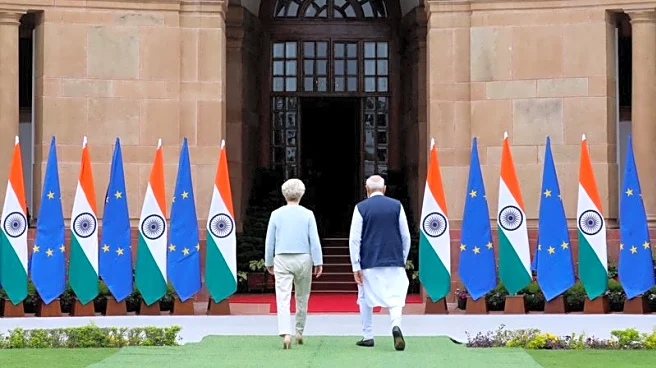What's Happening?
The Ministry of New and Renewable Energy (MNRE) in India has released a draft order for the Approved List of Models and Manufacturers (ALMM) List-III, targeting wafers and ingots. This initiative aims to enhance India's self-reliance in solar manufacturing by requiring at least three independent wafer/ingot manufacturing units with a combined minimum annual capacity of 15 GW to be operational by June 2028. The ALMM List-III will apply to utility-scale DISCOM PPA tenders, net metering, open access, and behind-the-meter projects, with varying implementation timelines. Despite criticisms regarding the stringent implementation schedule and the 15 GW annual threshold, the draft order underscores the government's commitment to advancing domestic PV upstream integration.
Why It's Important?
The implementation of ALMM List-III is crucial for India's solar manufacturing industry as it seeks to reduce dependency on imports and establish itself as a viable alternative to China in the global market. By localizing the solar PV value chain, India aims to achieve self-sufficiency and contribute to its Net Zero emissions goals. The initiative is expected to encourage domestic manufacturers to expand their capacities and invest in research and development to improve the quality of PV products. This move could significantly impact India's economic growth, energy security, and environmental sustainability by fostering a robust domestic PV supply chain.
What's Next?
The government may develop a similar list for polysilicon in the future, further localizing the solar PV value chain. Solar manufacturers are expected to plan for wafer capacity alongside their upcoming cell capacities, given the less capital-intensive nature of wafer and ingot manufacturing compared to cell manufacturing. Stakeholders will likely continue to engage with the government to address concerns about the implementation schedule and capacity thresholds, ensuring a balanced approach to capacity expansion and project development goals.
Beyond the Headlines
The draft ALMM List-III reflects broader trends in global solar manufacturing, where countries are increasingly seeking to localize production to enhance energy security and reduce carbon footprints. This initiative may also influence international trade dynamics, as India positions itself as a competitive player in the solar industry. The focus on domestic manufacturing could lead to technological advancements and innovations in PV technologies, potentially setting new standards for efficiency and sustainability in the sector.












